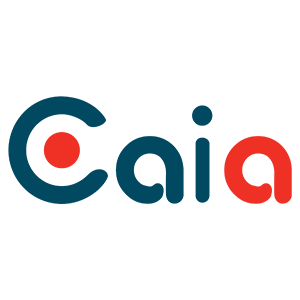Bài viết phần 4 trong loạt bài 200 yếu tố đánh giá xếp hạng của Google. Bạn có thể đọc lại phần 3: 200 yếu tố đánh giá xếp hạng của Google . Hoặc xem bài: Top 10 yếu tố xếp hạng website của Google của CAIA.

41. Reading Level:
There’s no doubt that Google estimates the reading level of webpages:

But what they do with that information is up for debate. Some say that a basic reading level will help your page rank because it will appeal to the masses. However, Linchpin SEO discovered that reading level was one factor that separated quality sites from content mills.
42. Affiliate Links – Link tiếp thị
Affiliate links themselves probably won’t hurt your rankings. But if you have too many, Google’s algorithm may pay closer attention to other quality signals to make sure you’re not a “thin affiliate site”.
Link tiếp thị có thể sẽ không làm ảnh hưởng đến thứ hạng website của bạn. Nhưng nếu bạn sử dụng quá nhiều thuật toán của Google có thể sẽ cần phải xem xét thêm nhiều yếu tố khác để chắc chắn rằng trang web của bạn không phải là một trang tiếp thị.
43. HTML errors/WC3 validation
Lots of HTML errors or sloppy coding may be a sign of a poor quality site. While controversial, many in SEO think that WC3 validation is a weak quality signal.
Lỗi Html/ Xác nhận của W3C : Có nhiều lỗi HTML hoặc mã hóa cẩu thả có thể là một dấu hiệu của một trang web chất lượng kém.
44. Page Host’s Domain Authority
All things being equal a page on an authoritative domain will higher than a page on a domain with less authority.
Xác thực trang chính của domain : Mọi thứ xuất hiện trên một miền có thẩm quyền sẽ cao sẽ có ưu tiên hơn so với những thứ xuất hiện trên một tên miền có thẩm quyền ít hơn.
45. Page’s PageRank:
Not perfectly correlated. But in general higher PR pages tend to rank better than low PR pages.
PageRank của Page : Nói chung các trang có PR cao hơn thì sẽ có xu hướng xếp hạng tốt hơn so với các trang PR thấp.
46. URL Length – Độ dài URL
Search Engine Journal notes that excessively long URLs may hurt search visibility.
URL quá dài có thể làm ảnh hưởng đến khả năng hiển thị tìm kiếm.
47. URL Path – Thành phần URL
A page closer to the homepage may get a slight authority boost.
Một trang có đường dẫn gần hơn với trang chủ có thể sẽ có giá trị hơn các trang khác một chút.
48. Human Editors:
Although never confirmed, Google has filed a patent for a system that allows human editors to influence the SERPs.
49. Page Category – Trang chuyên mục
The category the page appears on is a relevancy signal. A page that’s part of a closely related category should get a relevancy boost compared to a page that’s filed under an unrelated or less related category.
50. WordPress Tags:
Tags are WordPress-specific relevancy signal. According to Yoast.com :
“The only way it improves your SEO is by relating one piece of content to another, and more specifically a group of posts to each other”
“Cách duy nhất nó cải thiện SEO của bạn là nhóm các phần nội dung khác lại với nhau, và cụ thể hơn là một nhóm các bài viết với nhau”
51. Keyword in URL – Từ khóa nằm trong URL
Another important relevancy signal.
Từ khóa nằm trong URL là một dấu hiệu quan trọng.
52. URL String – Chuỗi URL
The categories in the URL string are read by Google and may provide a thematic signal to what a page is about:
Các mục trong chuỗi URL được đọc bởi Google sẽ cung cấp khái quát về các chuyên mục, nội dung có trong web đó.
53. References and Sources – Tham khảo và nguồn
Citing references and sources, like research papers do, may be a sign of quality. The Google Quality Guidelines states that reviewers should keep an eye out for sources when looking at certain pages: “This is a topic where expertise and/or authoritative sources are important…”.
Trích dẫn tài liệu tham khảo và các nguồn, như tài liệu nghiên cứu làm, có thể là một dấu hiệu của chất lượng.
54. Bullets and Numbered Lists:
Bullets and numbered lists help break up your content for readers, making them more user friendly. Google likely agrees and may prefer content with bullets and numbers.
Nội dung dạng lists : Nội dung dạng lists khiến cho nội dung bạn muốn truyền tải đến cho người đọc trở nên thân thiện hơn. Google đồng ý và thích nội dung có list.
55. Priority of Page in Sitemap – Ưu tiên trang sitemap
The priority a page is given via the sitemap.xml file may influence ranking.
Một trang được đưa ra thông qua các tập tin sitemap.xml có thể sẽ được ưu tiên về thứ hạng.
56. Too Many Outbound Links – Có quá nhiều Outbound Link
Straight from the aforementioned Quality rater document:
“Some pages have way, way too many links, obscuring the page and distracting from the Main Content”
Có quá nhiều Outbound Link: “Một số trang có quá nhiều liên kết, che khuất trang và mất tập trung vào các nội dung chính”.
57. Quantity of Other Keywords Page Ranks For:
If the page ranks for several other keywords it may give Google an internal sign of quality.
58. Page Age – Tuổi của trang
Although Google prefers fresh content, an older page that’s regularly updated may outperform a newer page.
= > Tuổi của trang: Mặc dù Google thích các nội dung mới, nhưng một trang có tuổi đời lớn nhưng lại cập nhật nội dung thường xuyên thì có thể lại tốt hơn một trang mới.
59. User Friendly Layout:
Citing the Google Quality Guidelines Document yet again:
“The page layout on highest quality pages makes the Main Content immediately visible”
Giao diện thân thiện người dùng : “Một page có giao diện tốt là page được thiết kế sao cho các nội dung chính được hiển thị ở vị trí dẽ nhìn nhất”
60. Parked Domains :
A Google update in December of 2011 decreased search visibility of parked domains.
Dịch: Caia.vn
Xem tiếp:

